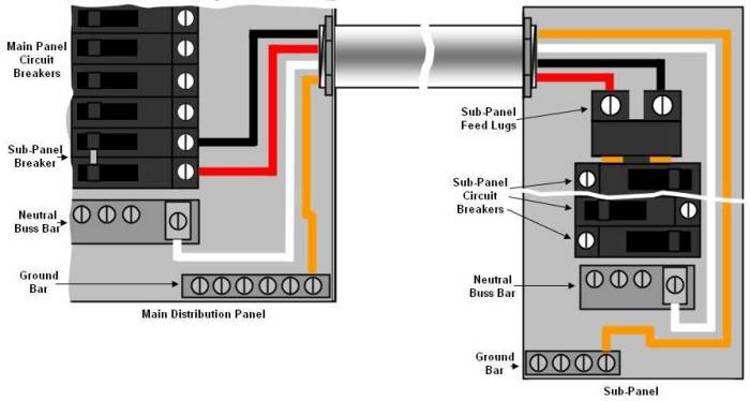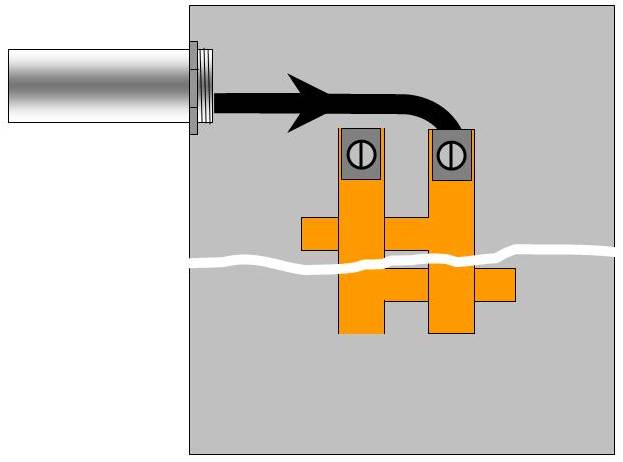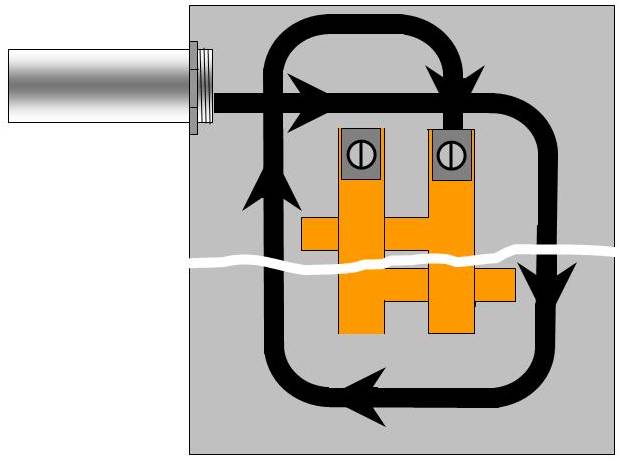Although the drawing on the previous page only indicates one distribution sub-panel, the limitation on the quantity of sub-panels is only governed by the number of circuit breaker positions in the main distribution panel.
The sub-panel is connected to the main distribution panel through a circuit breaker in the same manner that any other 240 VAC appliance or device would be connected.
The size (amperage) of the circuit breaker in the main distribution panel must be lower than the rating of the sub-panel chosen and the wire that connects the two panels must be the proper gauge based on the circuit breaker in the main panel. As an example, if the sub-panel is rated at 60 amps, the maximum amperage of the circuit breaker in the main distribution panel would be 60 amps. If a 60 amp breaker is installed then the gauge of the wire running from the circuit breaker in the main distribution panel to the sub-panel would be 6 (copper).
Additional information on wire gauges.
The wiring could be in the form of a 6 gauge cable that has two hot wires (red & black), a white neutral and a bare copper ground or it could be a conduit that contains 6 gauge wire. I always prefer to run between distribution panels using conduit, even if I use a pre-manufactured cable.
The wiring diagram, as shown in Figure 1, shows how to electrically connect a distribution sub-panel to a main electrical panel. For clarity, the wires are shown having 90 degree bends and not dressed properly. The wires should not be bent at 90 degrees, but should have a radius in the bend and should be dressed properly, as shown in Figures 2a and 2b.

Figure 1 - Wiring connection of sub-panel to load center or distribution panel via a circuit breaker
Dressing wires:

Figure 2a - Wire in electrical panel dressed (run) incorrectly

